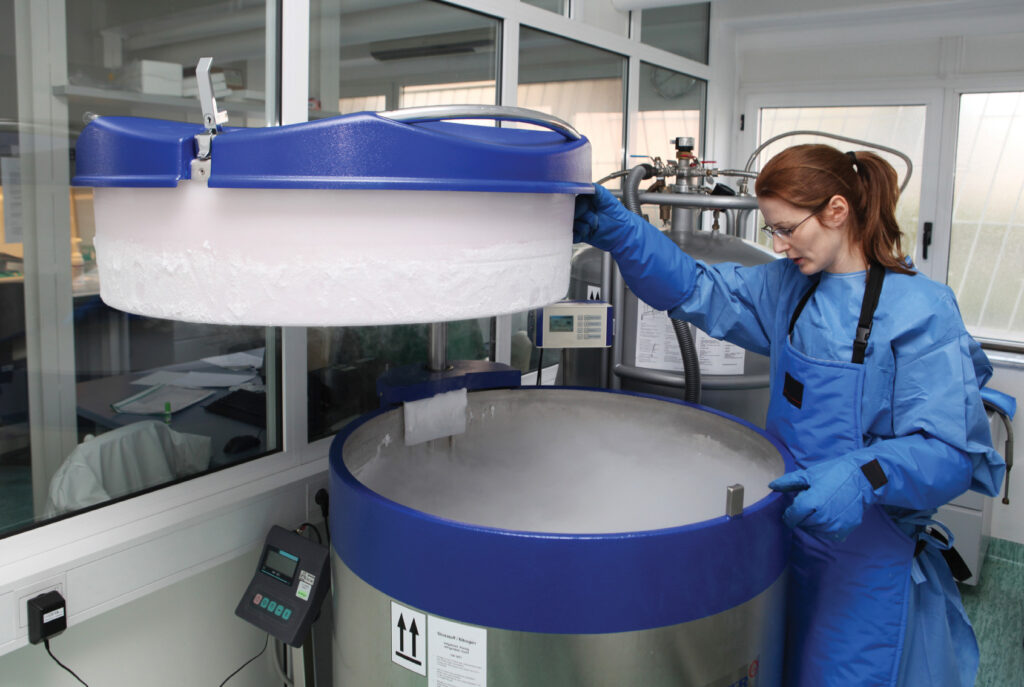Cryopreservation refers to the process of preserving living cells and tissues by cooling them to very low subzero temperatures. At ultra-low temperatures, any biological activity, including chemical reactions that lead to cell death, essentially stops, allowing long term storage. The key equipment involved in the cryopreservation process helps preserve a wide variety of biological samples from stem cells to organ tissues.
Freezers used for Cryopreservation
Cryopreservation requires specialized freezers able to maintain very low cryogenic temperatures usually between -80°C to -196°C. Some common types of freezers used are:
– Mechanical freezers: Rely on compressor technology to circulate refrigerants and actively cool samples down to -80°C. Often used for initial freezing and long term storage of cell cultures and biobanks.
– Liquid nitrogen freezers: Use Cryopreservation Equipment liquid nitrogen, which boils at -196°C, as a heat transfer medium to plunge samples down to ultra-low temperatures for long term cryogenic storage. Ideal for preserving stem cells and tissues long term.
– Vapor phase tanks: Suspend samples above the liquid nitrogen in an insulated vapor phase ensuring rapid freezing and thawing without direct contact with liquid nitrogen. Commonly used for blood, sperm and embryo banking.
Freezers must maintain tight temperature control and cryogenic stability for decades to preserve biological viabilitywithout temperature fluctuations that can damage cellular structures. Advanced freezers additionally offer programmable controls, remote monitoring and battery backups for safe long term preservation.
Equipment for Controlled Rate Freezing
Sudden freezing can damage cell membranes whereas gradual controlled rate freezing, usually 1-10°C/min, allows sufficient time for water to migrate out without forming ice crystals inside cells. Controlled rate freezers precisely regulate rates using technology like:
– Cooling plates/blocks: Consist of metal plates that cells are attached to which are precisely cooled or warmed at controlled rates by circulating liquid or gas like ethanol. Ensures uniform freezing of adherent cells.
– Contained freezing containers: Hold cell suspensions or tissue in enclosed containers that are lowered into a pre-cooled freezer to freeze at set rates automatically. Ensures safety and consistency for batches of samples.
– Programmable biofreezers: Allow customized freezing protocols for varying sample types by precisely adjusting temperature and time parameters with automated liquid nitrogen back-up if power fails.
Accurate controlled rate freezing is critical for maximizing post-thaw cell viability after cryopreservation especially for delicate cells like stem cells, oocytes and embryos.
Thawing and Revival Equipment
To utilize preserved cells and tissues, they must be effectively thawed and revived. Specialized thawing equipment includes:
– Water baths: Allow gentle controlled thawing of samples by gradual warming in a circulated water bath from -80°C to temperatures safe for handling. Commonly used for reviving cell cultures and tissues.
– Incubators: Provide a controlled humidified environment at body temperature to gradually revive delicate cells and tissues post-thaw to avoid osmotic shock. Essential for revival of stem cells and organ tissues.
– Quick-thaw devices: Rely on electrical heating elements or fans to rapidly thaw samples cryopreserved in vials or straws for procedures like ART without water contamination.
– Temperature monitoring systems: Electronically record and log thawing temperature profiles ensuring consistency and safety for clinical applications like fertility treatments and tissue engineering processes.
Effective thawing and revival can maximize post-thaw survival of precious biosamples allowing their successful utilization in R&D and therapies.
Quality Control in Cryopreservation
Stringent quality control measures ensure safety, accuracy and reproducibility of the cryopreservation process:
– Temperature data loggers: Monitor and record critical storage temperatures in all phases from freezing to long term storage to identify any temperature excursions for investigation and corrective action.
– Back-up systems: Liquid nitrogen level sensors and auto-fill systems, backup power generators help maintain critical operating parameters even during transient equipment failures without compromising sample integrity.
– Validation: Qualification and routine calibration of all process parameters like controlled cooling/warming rates through mock process runs and testing maximizes reliability.
– Documentation: Detailed procedures and electronic batch records with signatures ensure traceability and adherence to stringent processes and protocols for research and clinical applications.
– Audits: Regular audits against established SOPs and quality certifications like GMP/GXP help identify gaps and further optimize performance.
Robust quality oversight of cryopreservation equipment and processes is paramount for safety in life sciences research and assisted reproductive applications.
A wide variety of specialized cryopreservation equipment has enabled the science of long term biosample preservation at ultra-low subzero temperatures. Precise freezers, controlled rate freezing devices and thawing systems along with stringent quality practices provide the safeguards necessary for preserving bioresources including stem cells, tissues and genetic material that hold the potential to revolutionize regenerative medicine and therapeutics in the future. Cryopreservation technologies continue to progress towards developing more robust and affordable solutions suitable for broader clinical translation helping realize the promise of regenerative therapies worldwide.
*Note:
1. Source: Coherent Market Insights, Public sources, Desk research
2. We have leveraged AI tools to mine information and compile it

